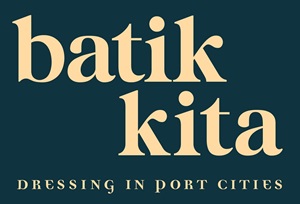BATIK AND PANTUN IN NUSANTARA: A CONSTELLATION OF POETICS
Poetics is the creative reading and appreciation of artistic and cultural objects and their symbols. This talk aims to delineate two of the Nusantara’s most well-known iconic cultural forms, namely batik and pantun. Batik works primarily in the physical-visual realm, while pantun exists in oral-ideational. Yet in many ways, they share similarities.
Traditionally, both are cultural products detached from the name of the author or artisan. Both, through motifs and stanzas encapsulate symbolic and literal messages. Both aim at communicating, and both can act to define the wearer or the articulator. As cultural products, both can be consumed or appropriated by all, regardless of class, ethnicity, gender, and age. Each can be made or styled in a higher intricate form as well as in popular versions.
The poetics of batik and pantun demand the ability to invoke and ink metaphors into words and shapes. At the very core of this poetics, batik and pantun need to possess form and substance that is hidup, which means “blissfully enlivening”, “appealing to the senses”, and “humanising in spirit”. It is these features that demand our attention, such that these cultural icons form part of our constellation of poetics, in which we can admirably invoke what we commonly share in the Nusantara – pantun and batik kita.
Speaker

Dr Azhar Ibrahim is a Senior Lecturer at the Department of Malay Studies, National University of Singapore (NUS), where he teaches Malay-Indonesian literature and ideologies of development. His research interests include sociology of literature, social theology, Islamic thought, critical literacy, and Malay-Indonesian intellectual development. Among his published works are: Emancipated Education (2020), Historical Imagination and Cultural Responses to Colonialism and Nationalism: A Critical Malay(sian) Perspective (2017), Contemporary Islamic Discourse in the Malay-Indonesia World (2014) and Narrating Presence: Awakening from Cultural Amnesia (2014).
Moderator

Lee Chor Lin, art historian and museum consultant, is curator of the exhibition Batik Kita: Dressing in Port Cities. She began her museum career in 1985 as a curator at the National Museum. She has been senior curator at ACM (1993–2002), and director of the National Museum of Singapore (2003–13), where she transformed the museum, influencing greatly the museum scene in Singapore. Lee was CEO of Arts House Limited (2013–16), which she set up for the National Arts Council, and which ran the Singapore International Festival of Arts. She was conferred Chevalier de l’Ordre des Arts et des Lettres by France in 2009 and Cavaliere, Ordine della Stella d’Italia, by Italy in 2012.
Image: Detail from a batik Belanda (Dutch batik) inspired by images seen in European fairy tales and magazines. "Slamet Pake" is urban slang of "Selamat Pakai", meaning "enjoy wearing". Kain panjang (detail). Central Java, Pekalongan, 1920s. Batik tulis. Cotton, synthetic dyes. ACM, T-0811.
Lee Chor Lin: Photo by Tara Sosrowardoyo
Organised in conjunction with the exhibition
